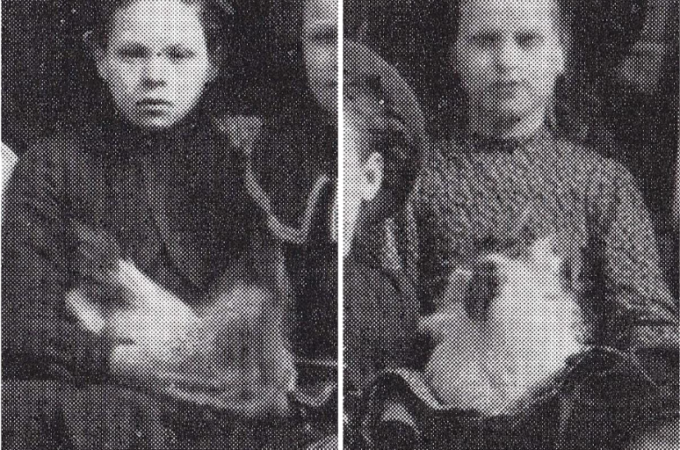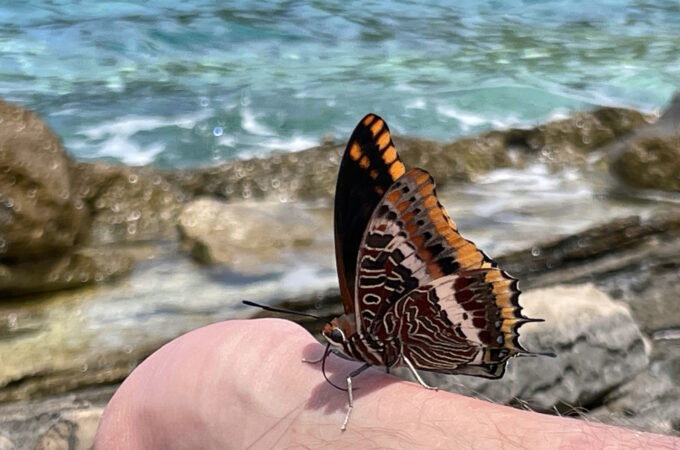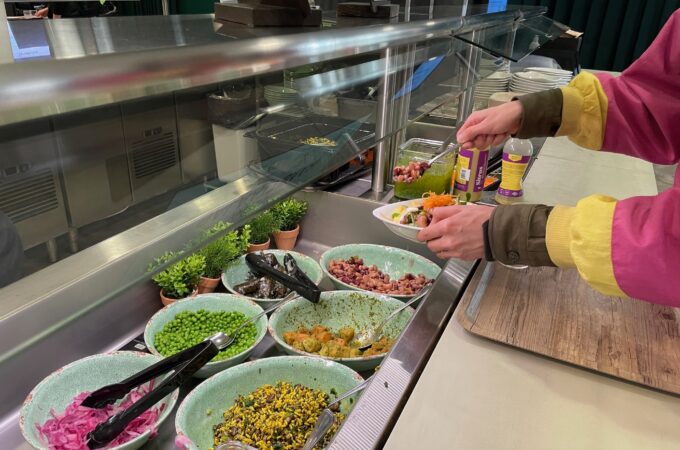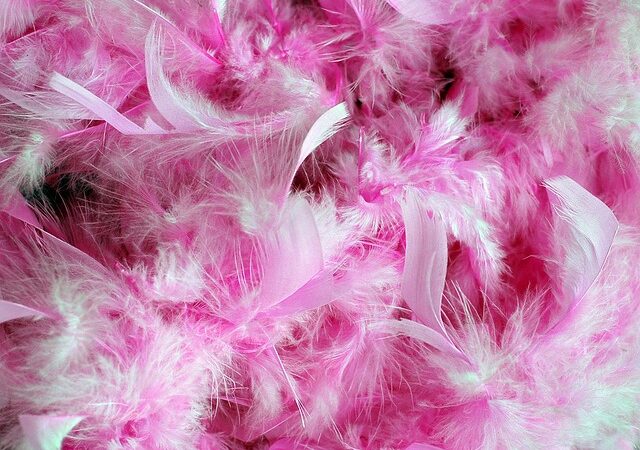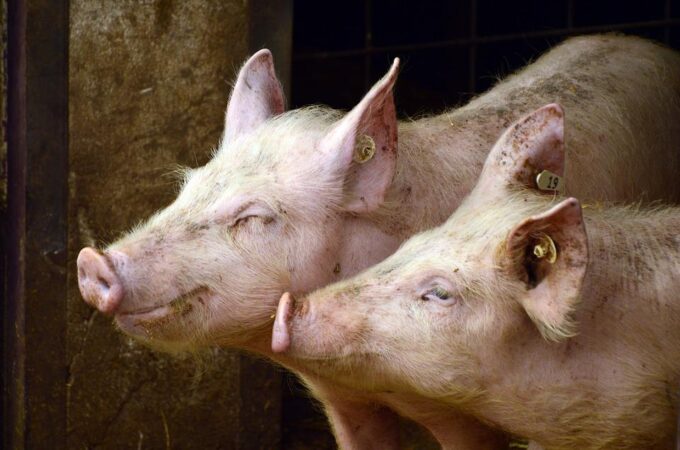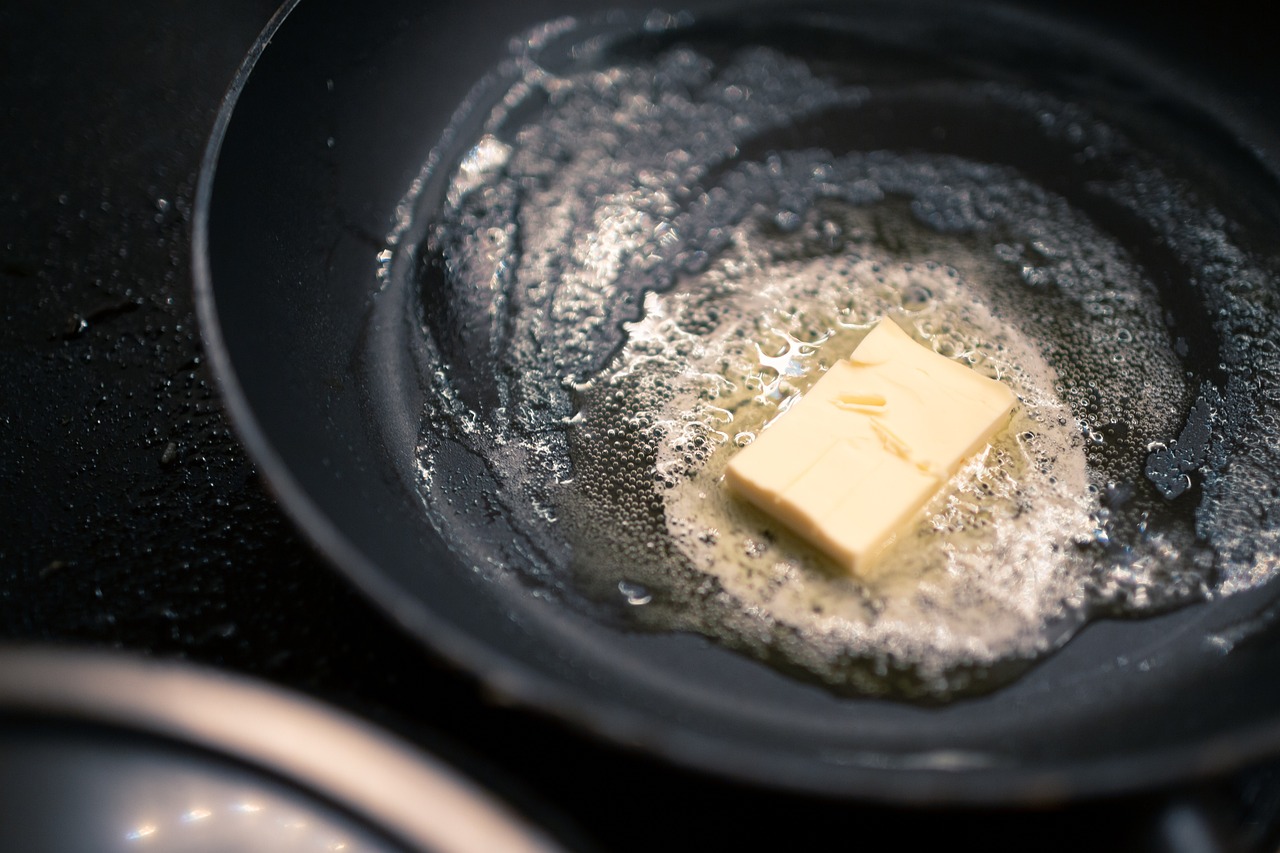
A Carnistic Fantasy: The Role and Meanings of Meat in Delicious in Dungeon
Introduction
Delicious in Dungeon is a Japanese comic series written and illustrated by Ryōko Kui, published in Japan by Enterbrain between 2014 and 2023. In 2024, the comic also received an animated television adaptation, produced by Studio Trigger and licensed by Netflix. The story takes place in a fantasy world seemingly inspired by Western tabletop role-playing games, like Dungeons and Dragons, and video games. In the world of Delicious in Dungeon, adventurers and those seeking fortune explore magical, monster-filled, and mostly underground areas called dungeons, reminiscent of exploration areas in role-playing games. A major overarching theme in the story is eating and being eaten. Getting proper sustenance to survive, alongside with gathering food by foraging, hunting, or cultivating, are crucial parts of the overall story. Multiple real-life concepts, such as the food chain, ecosystem, and nutritional values of food are evoked, and they appear to occupy a central role in Kui’s world-building.
In this essay, I analyze the role and meanings of meat consumption in the comic from an ecofeminist point of view. As I am unable to speak or read Japanese, my analysis is based on the English translation by Yen Press, North America. I am also not specialized in Asian studies or Japanese culture, so as a European hailing from Western cultural context, my main focus is on the elements inspired by or attributed to Western history and culture along with the North American translation and localization of the comic. I examine what kind of views regarding meat-eating and the hierarchies therein the story, dialogue, and visual elements of Delicious in Dungeon might convey to English speaking audiences. Additionally, I inspect what real-life concepts these views might be understood to be associated with. My framework consists of ecofeminist concepts and literature. I utilize Carol Adams’ (1990) critical ideas regarding meat production and eating, and Val Plumwood’s (1993) views on the mastery of nature. I also use the concept of carnism, an ideology that promotes and defends meat eating, as presented by Melanie Joy and Jens Tuider (2016). My additional literature consists of thoughts on critical feminist animal and multispecies studies by Kuura Irni, Kadri Aavik, and Milla-Maria Joki (2024), and publications discussing Japanese food history.
I adhere to the terminology of the comic’s lore when discussing the variety of creatures. I use the term human to refer to the different fantasy races of humans, which will be further discussed in the first chapter. The term race, in turn, refers to these fantasy subgroups of humanoids instead of its real-life usage, which evokes colonial histories and discourses relating to physical attributes and ethnicity. Any references to real-life humans and concepts will be marked with the prefix “real-life”. The specific names of different human races are employed if needed. With the term monster, I am referring to the dungeon-dwelling fantasy creatures, and with the term demihuman I am referring to the humanoid creatures existing in the grey area between humans and non-human creatures within the comic’s world. In addition, I employ the term non-human animal to refer to creatures that correspond with real-life animals other than humans. Terms like non-human animal are not unproblematic as they can be seen as reasserting human exceptionality (Irni, Aavik & Joki 2024, 9). However, for the categorization usage of this essay I find non-human animal useful when paired with the comic’s terminology because recognizing that humans are animals as well is imperative for my ecofeminist framework.
1 The Setting of Delicious in Dungeon
The fantasy world-building of Delicious in Dungeon adapts elements from real-life history and cultures. The area that the majority of the story takes place in appears to be largely inspired by medieval Europe, or fantasy versions of it, judging by clothing, architecture, and weaponry. The magical dungeons appear all over the world when a connection to the dimension of magical energy is formed. Some dungeons form in natural environments, like caves, and some consist of structures built by humans, such as ancient ruins. Mana, the magical energy, which originates from another dimension, flows to the surface world from the dungeons and is needed for spells. Occasionally, a human becomes the lord of a dungeon, gaining control of the environment, architecture, and monsters of a specific dungeon.
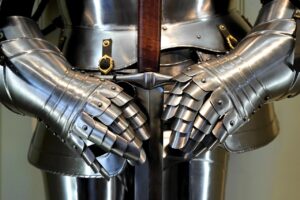
In the world of the comic, several different categories of creatures, namely humans, demihumans, non-human animals, and monsters, as well as some rare hybrid creatures exist. While non-human animals appear to correspond to real-life animals, other creature categories contain fantasy elements. There are several subgroups of humanoids that are all referred to as humans, with some regional variation stated. The races of humanoids that are generally referred to as human, are tall-men (the equivalent of real-life humans), elves, dwarves, gnomes, the child-sized half-foots, an ogres. Demihumans, in turn, are humanoid creatures that are generally not considered human. The demihumans encountered in the comic often have features of non-human animals, such as boar-like tusks or canine snouts and ears, and it is suggested that demihumans regularly experience prejudice, violence, and exploitation in the hands of humans.
Monsters are a fantasy subgroup of creatures, consisting of animal-like, humanoid, and plant-like creatures, as well as non-organic magical beings, such as enchanted objects. Monsters are separated from humans and non-human animals: unlike “normal” animals, monsters are magical in nature, possessing anatomies or abilities that are not encountered in the real world. They are largely based on a variety of real-life mythologies and folklores, such as Irish, Greco-Roman, Japanese, North- American, and Jewish, as well as popular culture, like the bestiaries of role-playing games. In the comic series’ companion book, Delicious in Dungeon World Guide: The Adventurer’s Bible, Kui utilizes real-life zoological classification system in dividing monsters into different categories. Monsters are separated into groups, such as mammals, fungi, reptiles, insects, and cephalopods. The monsters that cannot be likened to real-life flora or fauna form their own categories, for example spirits and magical creatures. All monsters reside in or in the vicinity of the dungeons, as they appear to need mana to survive.
For the most part, the story follows an adventurer party exploring an underground dungeon located on a small island. The main party is made up of a tall-man named Laios, who acts as the primary protagonist, an elf named Marcille, a half-foot named Chilchuck, and a dwarf named Senshi. At the start of the series, the party’s main goal is to rescue Laios’ sister Falin, who was eaten by a large dragon on a lower level of the dungeon after she had used magic to teleport the others out of the dungeon in order to save them from the dragon. While pursuing the lover levels, the party uses a lot of time discussing and cooking food and eating, so it is made clear from the beginning of the story that living beings need to eat in order to survive and function properly. Rescuing Falin on an empty stomach is not possible. In order to survive in the dungeon, the party resorts to eating monsters because food is expensive and even a week’s rations are heavy to carry. Senshi, who has lived in the dungeon for several years and has a lot of experience in cooking and eating monsters, acts as the party’s main cook. Senshi’s dialogue frequently promotes a balanced, healthy lifestyle that includes proper eating habits, such as regular meals and a proper, balanced diet, regular exercise, and sufficient sleep. With monsters on the menu, eating meat becomes a major theme throughout the story.
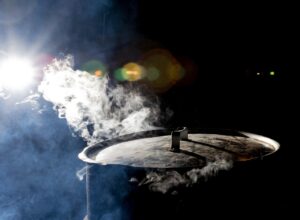
2 Meat and the Consumption Thereof
Judging by the dialogue and illustrations, I argue that the prevailing standard regarding food in Delicious in Dungeon is built on the normalization of eating meat. In real life, meat eating is one of the most normalized practices of everyday life (Irni, Aavik & Joki 2024, 13), and the world-building of the comic seems to reflect this stance. Norms stem from the beliefs and behaviors of the prevalent culture, and the way I see it, the dominant food culture of Delicious in Dungeon follows the real-life carnistic norm, which asserts eating meat as normal and even necessary (Joy & Tuider 2016, VI). Eating non-human animals is frequently referred to both in the dialogue and the illustrations, and it is not challenged by the characters. Usually, when characters ponder or daydream of food, like in chapters 1, 2 and 81, the dishes are shown or explicitly stated to include meat of non-human animals, such as pigs, different types of fish, and chickens. Meals shown during scenes that take place outside the dungeon usually include, besides plant-based products, dishes and ingredients that can be recognized as meat by appearance. In chapters 3 and 32, the store-bought or standard adventurers’ travel rations set is shown to include cured meat alongside bread, nuts, and dried fruit.
The carnistic assumption that humans need to eat animal products in order to function and stay healthy (Joy & Tuider 2016, XI) is reasserted and endorsed via the visual and verbal dietary guidelines presented in the comic. This might reflect the real-life Western assumption that everyone should eat meat whenever there is plenty available (Adams 1990, 53), which is not impossible considering the history of meat eating in Japanese culture. While eating meat has never been completely absent in Japan (Krämer 2008, 37–39), the widespread consumption of meat, as well as the idea of meat as healthy, came from the Western culture along with the Western-inspired modernization (Ishige 2014, 142). A meal-balancing guide shown in the first chapter, which appears to illustrate what humans need in order to sustain themselves, includes fish and meat, as well as milk and dairy, albeit in smaller proportions than the plant-based foods. In the third chapter, when discussing the meal habits of adventurers, Senshi reinforces the view that meat and other animal products are part of a balanced diet. When he states that their diet’s nutritional balance is in need of fat, the solution is to hunt a monster that is rich in fat, rather than, for example, gathering plants. Granted, among monsters the line between plant and animal is rather blurred due to plant monsters occasionally having both humanoid and non-human-animal-like appearances and the ability to move around. In this particular case, however, they seem to be specifically searching for an animal-like monster, judging by the fact that Senshi hopes to find eggs as well, which he states to be the “perfect food”. Meat and other animal products are represented as powerful, necessary, and irreplaceable (Adams 1990, 57).
On the other hand, eating meat can be seen as a matter of survival, especially in the dungeon. While some floors are shown to contain plants and plant-like monsters, other floors appear more or less barren and contain mainly animal-like monsters. So when previous rations run out, eating meat might be the only way to survive. In this case, eating meat might not be exclusively tied to the carnistic normalization of meat. Although in some instances the main party actively seeks out monsters to hunt for food, a lot of times they eat monsters that have attacked them and which they have killed in self-defense. At the end of the first chapter it is stated that in the dungeon the rule is “eat or be eaten”. Survival without killing the monsters that attack the party might not even be possible as monsters are shown to be aggressive towards non-monsters and they oftentimes attack on sight. Even though the party occasionally hunts monsters, Senshi instructs the party to only kill and gather what they need so they do not disturb the balance of the dungeon’s ecosystem. In addition, eating the killed monsters can be seen as a way to make sure the creature’s death does not go to waste: Laios remarks in chapter 48 that eating the bodies of creatures whose life has already ended can be understood as a “way to honor their memory”.
Aboveground and in the more peaceful and plant-filled parts of the dungeon, eating meat is, however, not purely a matter of survival. In chapter 46, the main party explores the Golden Country, an ancient kingdom within the dungeon, hidden by a lunatic magician, the lord of the dungeon in question. The residents of the Golden Country do not need to eat, due to the spell of immortality cast by the magician, but they cultivate fields in order to keep themselves occupied and keep living their lives as normally as possible. Monsters residing in the village are harmless because they have been ordered to not to hurt the residents, presumably by the magician. Therefore, killing monsters for the sake of survival is not necessary within the hidden Golden Country. Despite these factors, some of the residents occasionally kill and eat monsters, and monsters are kept as livestock, which likens them to non-human animals. For example, minotaurs are kept as dairy cows in small pens. Farming non-human animals is so normalized that it is not questioned even in situations where animal products are not needed. Through a carnistic lens, just like the real-world animals raised as livestock are objects (Joy & Tuider 2016, XII), in the comic, monsters are treated as mere resources.
While eating meat is considered the norm, what kind of meat is okay to eat is under constant debate in the story. Eating non-human animals is considered normal, and it does not raise any questions among the comic’s characters, but eating monsters, however, appears to go against the food norm, as it is constantly met with negative reactions. Majority of characters often react to eating monsters with varying levels of shock, disgust, and horror, and they view Laios, who is extremely enthusiastic about monsters and discovering what they taste like, as weird. Eating monsters seems to be a taboo: for example, in chapter 44 Marcille tells that monsters “seem unclean” and that eating monsters feels like eating “something bad”, bringing to mind real-life categorizations and stereotypes of certain non-human animals being considered cleaner or more suitable for eating than others.
3 Meat and the Hierarchies Between Creatures
I argue that the hierarchies between creatures in Delicious in Dungeon reflect real-life anthropocentric hierarchies. In real life, being human is considered inherently positive while those defined as non-humans are seen as inferior (Plumwood 1993, 26). Humans are presented as the masters of non-human nature (Plumwood 1993, 147). Accordingly, judging by the treatment of non-human animals, demihumans, and monsters, humans are on top of the hierarchy in the comic. At the same time, humans are stated to be part of the dungeon’s food chain, which is described as “non-hierarchical” in the first chapter, the rule of the dungeon’s ecosystem being “eat or be eaten”. In real-life Western, individualist thought humans are often thought to be above and removed from non-human world (Alaimo 2018, 435–436), but in the dungeon, humans can find themselves in the role of prey. However, humans still receive special treatment that does not extend to non-human animals or monsters.
Humans are clearly separated from non-human animals and monsters, bringing to mind real-life human exceptionalism (Irni, Aavik & Joki 2024, 3). In addition, humanoid creatures seem to occupy a higher place in the comic’s hierarchy than non-humanoid creatures. When discussing possible food sources in chapter 2, Marcille states that she refuses to eat demihumans. Both non-monster demihuman races and demihuman monsters seem to be generally considered as inferior to humans and are often mistreated or killed, but they are not considered possible food sources. In chapter 15, Chilchuck further confirms when he and Laios examine a dead fish-faced, “piscine type” mermaid that eating creatures that resemble humans in one way or another is not okay. Even though Laios notes that the creature is more related to fish than humans or even mammals, Chilchuck firmly declares that they cannot eat it as eating creatures that resemble humans “feels nasty”. It seems that the more a creature looks like a human, the less acceptable it is to eat it. Eating non-human animals, however, is taken for granted, and eating non-humanoid monsters is a viable possibility.
Non-human animals, namely goats and pigs, are frequently used to resurrect humans. Due to the spell of immortality casted on the dungeon that prevents human souls from leaving their bodies upon death, deceased humans can be brought back to life with resurrection spells. The resurrection is shown to also work on non-monster demihumans, but monster souls and, presumably, the souls of non-human animals do not get bound by the spell. The flesh and blood the corpse might have lost during or after death needs to be replaced with the flesh of non-human animals or monsters, though the usage of the latter appears to be unusual. Non-human animals are sacrificed en masse to bring humans back from the dead. This reduces them again into mere resources for humans to utilize and reaffirms the representation of humans as masters of non-human nature (Plumwood 1993, 147). The creature that has value in its own right and that is worth sacrificing massive amounts of other creatures for, is human or human-like.
4 Identity of Meat
Within the dungeon, where the barrier between life and death is blurred, even butchered, dead flesh of creatures still has the potential to come back to life. However, the fundamental rule is, as deduced by the main characters in chapter 52, that the meat digested by another creature loses its identity as the digested meat now belongs to, or is a part of, the one who ate it. What is to be noted is that this rule does not apply only to digestion by eating, but also digestion by resurrection. In the resurrection processes that utilize non-human animals, only the human part of the resurrected flesh and blood retains their identity: the flesh consumed in the spell becomes part of the resurrected human, and thus no longer exists as a non-human animal.
Additionally, a more precise wording for the phenomenon discussed in the previous paragraph might be losing one’s identity permanently. When it comes to meat, there are two levels of loss of identity. As I see it, the monsters that the characters use as food also lose their identities prior to digestion, during the process of butchering, much like real-life non-human animals. When a non-human animal is butchered, it becomes absent as an animal, a so-called absent referent: through the process of butchering and renaming, non-human animals are transformed into meat, which is associated with cuisine rather than dead animals (Adams 1990, 66). The flesh of the killed monsters is explicitly referred to as meat in the comic, such as dragon meat, basilisk meat, and kraken meat. When cut up and renamed, that is, transformed into meat, the monsters are no longer the creatures they were in life and in death. However, as mentioned in the previous paragraph, meat still has the potential to come back to life in the magical setting of the comic. A permanent loss of identity happens when said meat is digested by another creature, either by eating or as a part of spells that use non-human creatures’ flesh to mend human bodies.
An interesting and pivotal case in the story is that of the dragon chimera. In chapter 27, Falin, Laios’ sister, who was eaten by a dragon, is resurrected by using the now defeated dragon’s flesh. Only Falin’s skeleton remains human in origin. The resulting creature is essentially both Falin and the dragon, due to the unusual resurrection causing their souls to mix together. While the party recognizes the human-shaped creature as Falin, the lunatic magician, the lord of the dungeon, recognizes her only as the dragon. In chapter 29, after musing how inconvenient the new human form must be for the dragon, the magician turns Falin into a chimaera, a human/dragon hybrid, with the body of a dragon and Falin’s human-shaped body from the waist up where the dragon’s neck and head should be. In chapter 52, the party comes to the conclusion that to return Falin to human, they must cook and eat the dragon parts of the Falin/dragon chimaera’s body in order to reduce or drive away the dragon’s soul. Soul, or identity, is again tied to one’s flesh and the shape and name thereof. The dragon has lost its identity in digestion: the human-shaped part of the Falin/dragon chimaera’s body is considered human by the party, even though it too consists mostly of the dead dragon. Similar to non-human animals ceasing to exist as animals when transformed into meat (Adams 1990, 66), the dragon becomes an absent referent, whose identity as an independent entity is forgotten in order for the resurrected human and the consumed meat to exist.
5 Conclusion
From a critical ecofeminist point of view, the world of Delicious in Dungeon appears, for the most part, to reflect real-life carnistic and anthropocentric norms. In the story that largely revolves around eating and being eaten, eating meat is highly normalized. Meat is presented as a part of a balanced diet, and eating meat is regularly shown in situations where there are other food options present or eating is unnecessary. In some instances, eating meat can be seen as a matter of survival as other food sources might not be available and encountering monsters often comes down to kill or be killed. However, it does not negate the carnistic meat norm that the comic reflects.
Although eating meat is not questioned, what kind of meat and which kind of creatures is okay to eat is under debate during the story. Creatures that resemble humans are generally not considered an acceptable food source. Non-human animals and monsters are regularly treated as resources for human ends, which reflects an anthropocentric worldview, where humans are considered more important and higher in the hierarchy than non-humans.
As stated in chapter 2 of this essay, in real life, eating meat is extremely normalized. Therefore, it is no wonder that stories that are not from an explicitly vegetarian or vegan point of view reflect the normativity of meat. Although the themes of Delicious in Dungeon also promote maintaining the balance in the ecosystem and can even be seen as criticizing overconsumption, the normative position of meat remains unchallenged.
Miska Helle
The author is an area and cultural studies Bachelor student, who is interested in the scrutiny of gender constructs, representations in popular culture, and the deconstruction of anthropocentrism.
References
Adams, Carol. 1990. The Sexual Politics of Meat. Continuum, New York.
Alaimo, Stacy. 2018. Trans-corporeality. Rosi Braidotti and Maria Hlavajova (eds.) The Posthuman Glossary: 435–438. Bloomsbury Academic, London.
Irni, Kuura, Aavik, Kadri and Joki, Milla-Maria. 2024. Introduction: Critical Feminist Animal and Multispecies Studies. Kadri Aavik, Kuura Irni and Milla-Maria Joki (eds.) Feminist Animal and Multispecies Studies: Critical Perspectives on Food and Eating: 1–41. Brill, Leiden.
Ishige, Naomichi. 2014. The History and Culture of Japanese Food. Routledge, London.
Joy, Melanie and Tuider, Jens. 2016. Foreword. Jodey Castricano and Rasmus R. Simonsen (eds.) Critical Perspectives on Veganism: 41–66. Springer International Publishing.
Krämer, Hans Martin. 2008. “Not Befitting Our Divine Country”: Eating Meat in
Japanese Discourses of Self and Other from the Seventeenth Century to the Present. Food and Foodways, 16(1), 33–62.
Kui, Ryōko. 2014–2023. Delicious in Dungeon. Translated by Taylor Engel. Yen Press, New York
Kui, Ryōko. 2022. Delicious in Dungeon World Guide: The Adventurer’s Bible. Translated by Taylor Engel. Yen Press, New York.
Plumwood, Val. 1993. Feminism and the Mastery of Nature. Routledge, London.
Images: Pixabay

